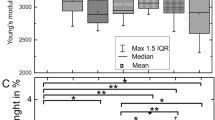This study investigates the biocompatibility of polypyrrole, a conducting polymer, and comments on its potential as an effective guidance channel for the regeneration of nervous tissue. The polymer was prepared in our laboratories by an electro-polymerization process. Pyrrole is placed in an electrolyte and when a potential is applied polypyrrole is deposited at the anode. After polymerization the polypyrrole is easily removed from the anode. Extraction in methanol for a period of 1 week was carried out to remove residual electrolyte. The biocompatibility of the material was assessed in vitro and in vivo. The response of two cell lines growing in contact with the polymer was evaluated. L929 mouse fibroblast and neuro2a neuroblastoma cells contacted the polypyrrole in a specially constructed cell culture chamber which allowed a controlled current to pass through the material. In vivo, the material was evaluated following implantation into a rat model. furthermore, the effect of charge on the cell lines was examined using the same cell culture chamber, but substituting platinum wire for the polypyrrole. Finally, the polypyrrole was deposited directly onto the platinum wire and introduced to the cell culture chamber. The results demonstrate that the polypyrrole is cytocompatible in vitro if prepared by appropriate extraction techniques. In vivo there was only a minimal tissue response after 4 weeks in situ. The cell culture chamber model proved successful and allowed a current up to 1 mA to be applied across the polypyrrole or platinum wire while in contact with both cell lines. Some evidence of toxicity was evident when a current of 1 mA was applied across the polymer for periods up to 96 h. However, it is clear from these experiments that polypyrrole can be an effective medium for carrying current in a biological environment.
Similar content being viewed by others
References
R. D. Fields, J. M. Le Beau, F. M. Longo and M. H. Ellisman, Prog. Neurobiol 33 (1989) 87.
P. Aebischer, V. Guenard, S. R. Winn, R. F. Valentini and P. M. Galletti, Brain Res. 454 (1988) 179.
L. F. Jaffe and M. M. Poo, J. Exp. Zool. 209 (1979) 115.
J. M. KERNS, I. M. PAVKOVIC, A. J. FAKHOURI, K. L. WICKERSHAM and J. A. FREEMAN, J. Neurosci. Meth. 19 (1987)
P. Aebischer, B. F. Valentini, P. Dario, C. Domenici and P. M. Galletti, Brain Res. 436 (1987) 165.
E. G. Fine, R. F. Valentini, B. Bellamkonda and P. Aebischer, Biomaterials 12 (1991) 775.
R. F. Valentini, T. G. Vargo, J. A. Gardella and P. Aebischer, Biomaterials 12 (1992) 183.
S. A. Makohliso, R. E. Valentini and P. J. Aebischer, Biomed, Mater. Res. 27 (1993) 1075.
K. J. Wynne and G. B. Street, Macromolecules 18 (1985) 2361
R. A. Pethrick, in “Electrochemical science and technelogy of polymers 2”, edited by R. G. Linferd (Elsevier, London 1990) p. 149.
K. K. Kanagawa, A. F. Diaz, M. T. Krounbi and G. B. Street, Synthetic Metals 4 (1981) 119.
R. B. Kaner, in “Electrochemical science and technology of polymers 2”, Edited by R. G. Linford (Elsevier, London, 1990) p. 97.
Author information
Authors and Affiliations
Rights and permissions
About this article
Cite this article
Williams, R.L., Doherty, P.J. A preliminary assessment of poly(pyrrole) in nerve guide studies. J Mater Sci: Mater Med 5, 429–433 (1994). https://doi.org/10.1007/BF00058978
Received:
Accepted:
Issue Date:
DOI: https://doi.org/10.1007/BF00058978




